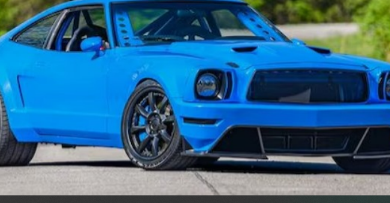
On a momentous morning, a young Myles Rowe was engrossed in watching golf on TV when, during a commercial break, his father seized the remote and switched the channel. Unbeknownst to them, this simple act altered Rowe’s life trajectory. The adjacent channel happened to broadcast an F1 race, and there, Rowe caught a glimpse of two-time F1 champion Fernando Alonso steering his vibrant blue and yellow Renault. From that instant, Rowe knew his destiny was to become a race car driver.
Myles Rowe
What makes motorsports captivating is the ease with which one can become a fan. Drivers, akin to heroes, command dream machines, pushing both the car and themselves to the limits of speed. While racing may seem almost perfect on paper, it is not immune to flaws, including politics, dubious officiating, and questionable sponsors that have plagued professional motorsports for decades. Adding to these challenges is a lack of diversity, particularly in open-wheel racing, an issue that has been largely overlooked.
The excuses are familiar—no, it’s not merely a coincidence, and no, it’s not because Black people lack interest in racing. The diversity issue in open-wheel racing is deeply rooted in societal and systemic problems within sanctioning bodies. Black racing enthusiasts are tired of being underrepresented, a fact underscored by the stark statistic that, in the 108-year history of the Indianapolis 500, only two Black drivers have participated: Willy T. Ribbs in 1991 and George Mack in 2002. Myles Rowe may well be the catalyst for a much-needed solution, potentially becoming the next Black driver to grace the Indy 500.
Rowe’s journey into open-wheel racing diverged from the traditional, expensive route. Instead, he commenced his racing endeavors with indoor karting at a local facility. Despite his humble beginnings, Rowe approached each race weekend with dedication. When not at the indoor kart track, he honed his skills on a makeshift racing simulator comprised of couch cushions, pillows, and a laptop propped up on books.
His hard work paid off, catching the attention of two-time Indy Car Champion and 2018 Indy 500 winner Will Power. Power, in turn, recommended Rowe to Roy Reid, the founder of Force Indy, an open-wheel racing team focused on providing opportunities for Black youth and minorities. Reid signed Rowe as the team’s inaugural driver.
Rowe is now on track to become the third Black driver to enter the Indy 500 in 22 years. Making history is not new for Rowe; he made headlines as the first Black racer to win an Indy Car-sanctioned event in 2021 and secured the 2023 USF Pro 2000 Championship. This victory earned him a spot in the Indy NXT series for 2024, a series directly linked to IndyCar. Success in NXT would bring him closer to his goal of entering and winning the Indy 500 in 2025.
As he heads into the upcoming season with all eyes on him, Rowe reflects on his calmness amid the chaos of racing. He attributes this state to his spiritual and introspective nature, emphasizing the importance of clear-headedness, noise filtration, and focused meditation in navigating the demands of the sport.
Balancing his competitive drive with the responsibility of representing his community, Rowe acknowledges the delicate line he treads. He strives for humility but recognizes the need to share his narrative and the challenges he faces as a Black driver breaking barriers in a predominantly white-dominated industry.
Rowe’s concerns extend beyond fans; he expresses apprehension about how the motorsports industry views him. He cites the example of Willy T. Ribbs, who was unapologetically vocal, and contrasts that with his own approach, influenced by a fear of industry perception.
This fear is intertwined with the broader Black experience, where speaking up about diversity is met with resistance, and success is sometimes questioned based on race. Rowe acknowledges such comments but remains focused on his skill and worth, distinguishing between background noise and meaningful signals.
He sees his journey as an opportunity to address the systemic lack of diversity in motorsports. Rowe emphasizes that his success is not solely because he is Black; it is a result of seizing opportunities that countless diverse individuals were denied due to barriers based on their skin color.
Rowe’s story is an inspiration for a generation of Black motorsport enthusiasts who may face similar challenges. He advises them to transform negativity into positive fuel, using external criticism as motivation for personal and collective success.




